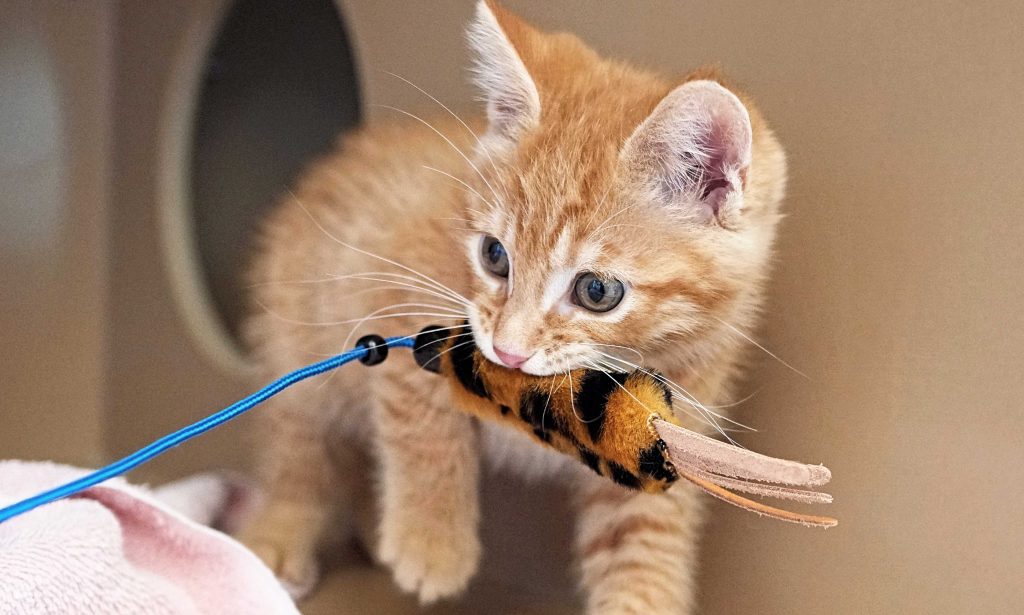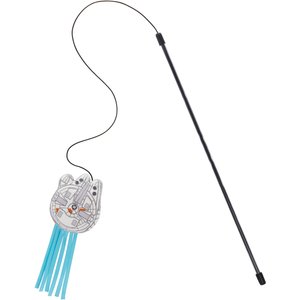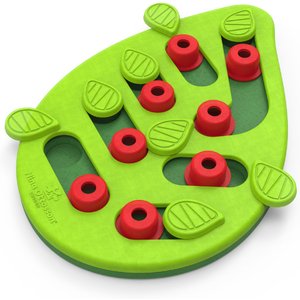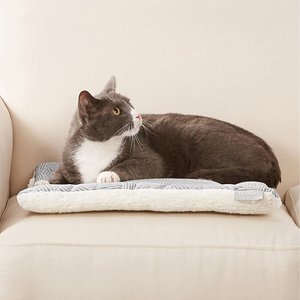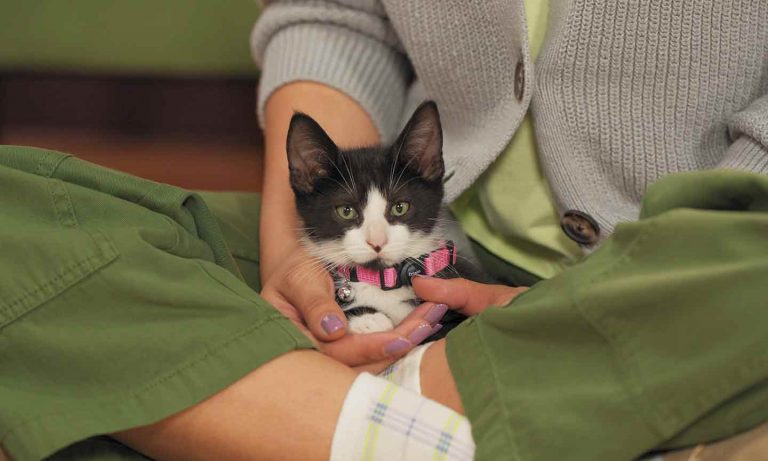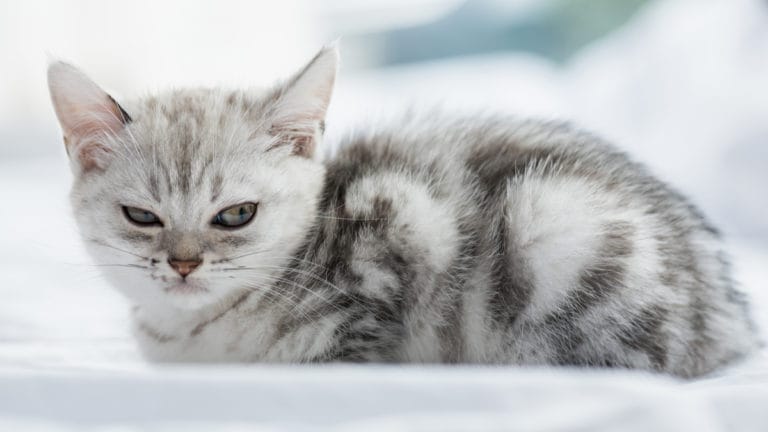Adding a kitty to the family is exciting! You may not be the only one having big feelings, though. If you’re sensing your new kitten seems to be a little too enthusiastic in their new home, it’s possible they've gone beyond displaying normal kitten energy and are experiencing hyperactivity.
We spoke to a cat behavior consultant to get the scoop on hyperactive kittens, including how to prepare for a hyper kitten, how to spot hyperactivity and tips for what to do about it.
Click to jump to each section:
What Does a Hyperactive Kitten Look Like?
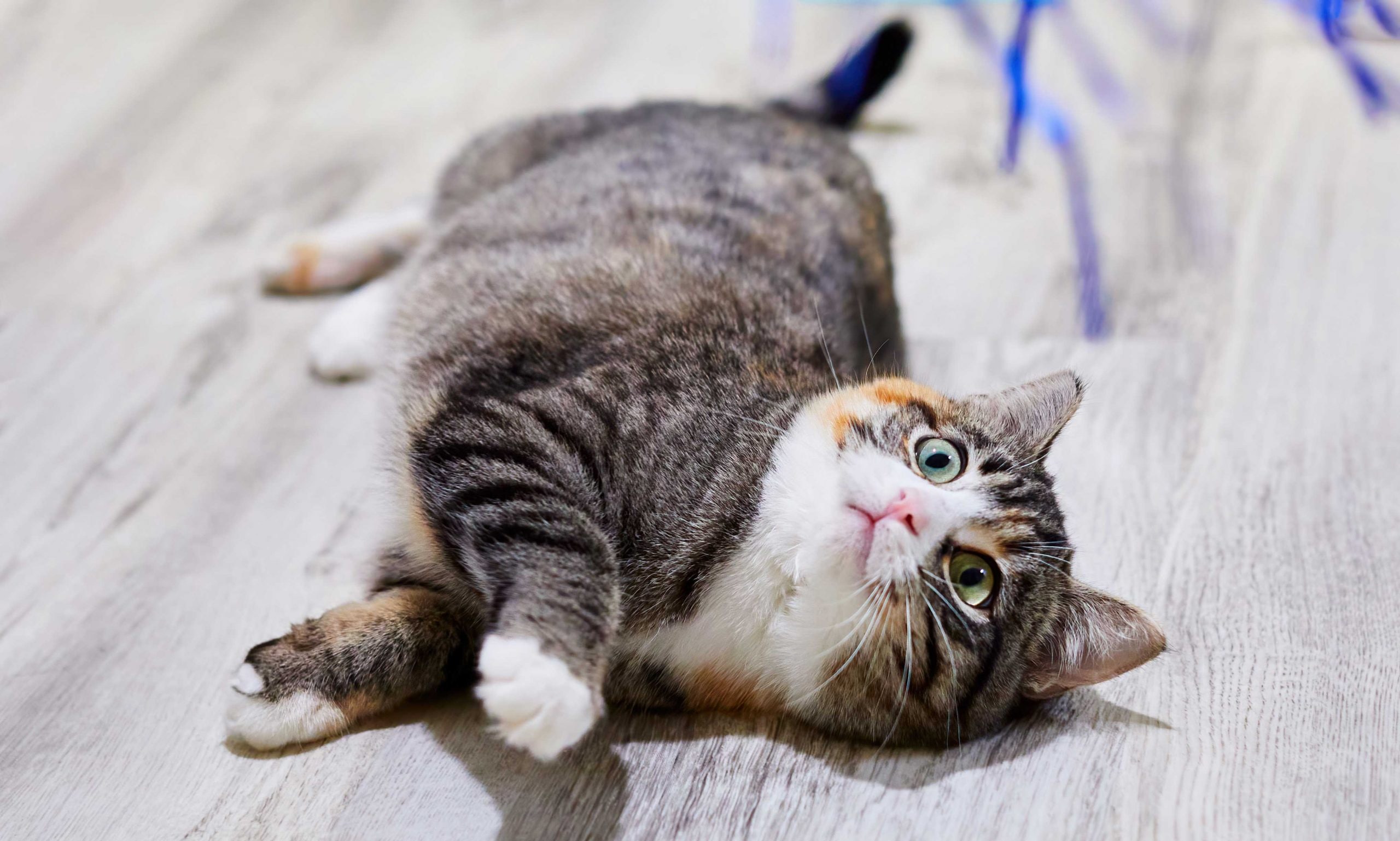
“Hyperactivity can be thought of as an extreme version of normal kitten behaviors, to the point where they’re challenging to manage for the humans and frustrating for the cat,” explains Joey Lusvardi, an IAABC certified cat behavior consultant and owner of Class Act Cats in Minneapolis, MN.
He offers the following as potential signs of hyperactivity:
- Failing to tire out/slow down after adequate play with their human
- Darting around the home (“zoomies”)
- Engaging in destructive behaviors
- Biting
- Attention-seeking
Additionally, if you have more than one cat, Lusvardi suggests keeping an eye on how they interact and being aware of conflict—as this can also be a sign. If your new kitten is hyperactive and your existing cat is more chill, the overactive kitten will likely annoy the calm cat, which can lead to conflict. Basically, if your new kitten and your existing cat are not getting along—and the new kitty is showing any of the signs of hyperactivity listed above—you may officially have a hyper kitten on your hands.
How To Calm Down a Kitten: 3 Tips for Managing Hyperactivity
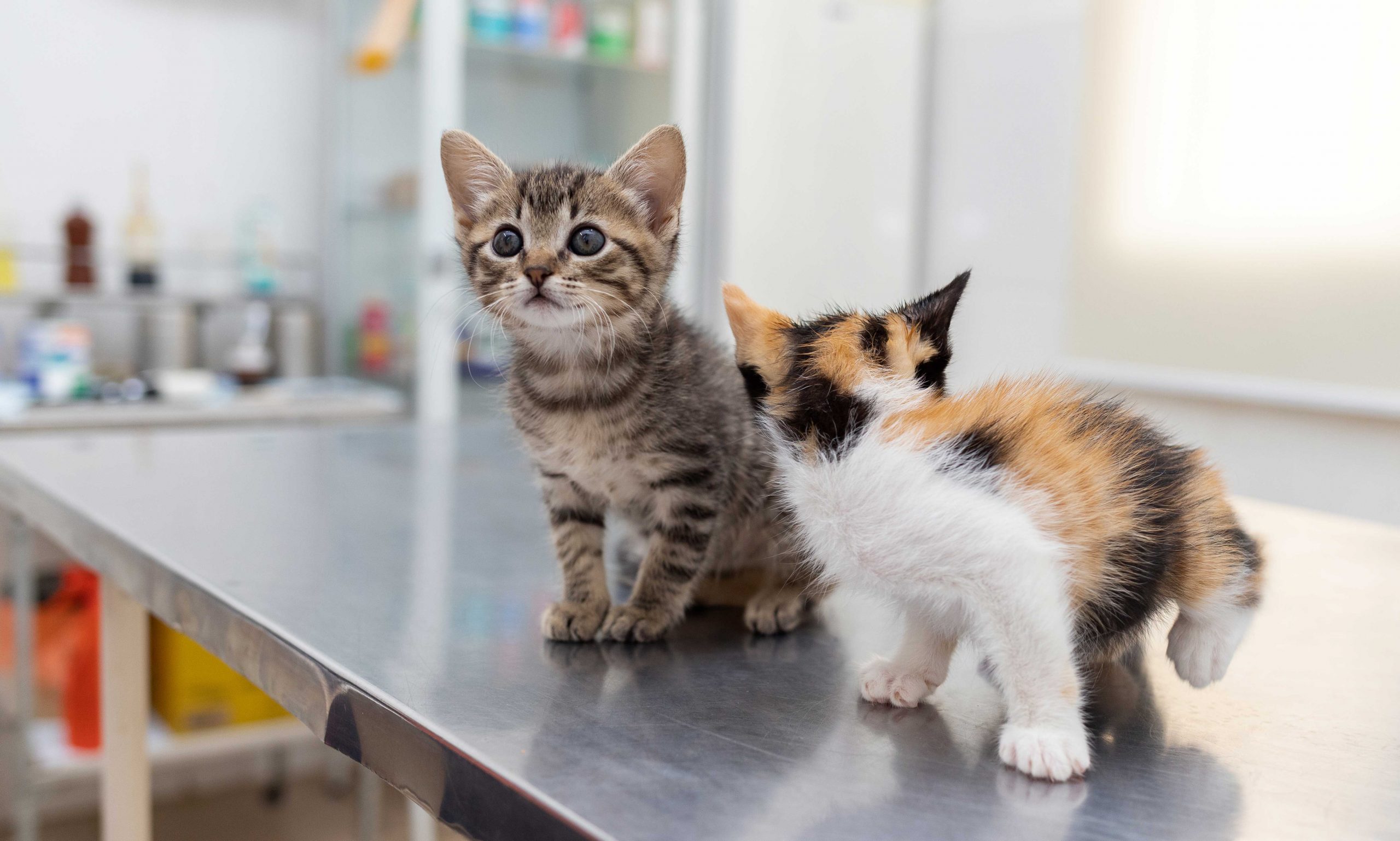
1. Visit the Vet
Start with a trip to the veterinarian to make sure there isn’t a medical problem such as hyperthyroidism that could be contributing to the hyperactivity, Lusvardi recommends.
Look for a Fear Free veterinarian/practice or certified Cat Friendly Practice to help prevent your feline friend from associating a vet visit with fear and stress. (In short, these certification programs ensure that cats will feel less stress and fear while visiting the vet.)
2. Complete a Behavior Audit
Assuming your cat receives a clean bill of health, take a look at the bigger picture. Lusvardi suggests a “behavior audit”:
- Look at your cat’s natural behavior and see if you can identify any potential causes.
- Look for patterns. For example, is your kitten engaging in unwanted behaviors at any particular times of the day?
- Consider your own role. Is there something you might be doing unintentionally that is exacerbating the issue?
3. Play, Play, Play!
While people know dogs love to engage in playtime with their families, Lusvardi notes that pet parents can underestimate how much their cats really enjoy playtime, too—possibly because “cats can be a bit deceptive in how they play.”
Because cats are natural hunters, “playing is hunting,” says Lusvardi. “Part of the hunt is stalking the prey.”
This means that your kitten may carefully watch a toy for a while, but not make any moves. It doesn’t mean they’re not having fun. In fact, they’re probably really engaged. He says that as long as your kitten is following the toy, they’re having a good time.
With this in mind, know that playing with your new kitten can be a good way to calm them.
“You don’t necessarily want to shoot for exhausting the cat, but you want to focus on making sure the kitten’s natural hunting instinct will be satisfied,” he says.
Playing helps address the higher level of energy that kittens have and eases boredom. It gives them an appropriate outlet.
4 Tips for Playing with a Hyperactive Kitten

1. Engage in Interactive Play
First up: Use a wand to imitate the hunt cycle.
“Cats prefer multiple short sessions of play during the day, so you should play for 10 to 15 minutes,” Lusvardi says, and then take a break.
Following your play session, offer up cat food (specifically, food formulated for kittens) or treats. This reward makes the play sessions feel more like a real hunt.
2. Stimulate Your Kitten With Food Puzzles
While you don’t want to replace interactive play with a food puzzle, adding one to your routine is a good idea. After all, you can’t play with your kitten full-time. With high energy levels, a hyperactive kitten needs all the help they can get.
Lusvardi specifically recommends Nina Ottosson Petstages Buggin' Out Puzzle & Play Cat Toy. It’s his favorite because “you can easily adjust the difficulty level for most cats if they need it to be easier or harder.”
3. Try Clicker Training
Another option is clicker training, which will offer mental stimulation to your kitten as well as build the bond between the two of you.
“Plus, people still wrongly think cats can’t be trained, so you’ll impress your friends,” Lusvardi adds.
4. Laser Training (But Use Caution)
While laser toys can be used to initiate play, Lusvardi cautions that cat parents should transition their kitten to an actual toy their cat can catch as soon as possible.
“Lasers can never be caught, so they can be very frustrating for cats,” he says. “They won’t satisfy the cat’s hunting instinct.”
Note that this holds true even if your kitty is engaging by chasing and playing with the laser. “The full hunt cycle is never completed,” Lusvardi points out.
Why Is My Kitten So Hyper? And Will It Ever End?
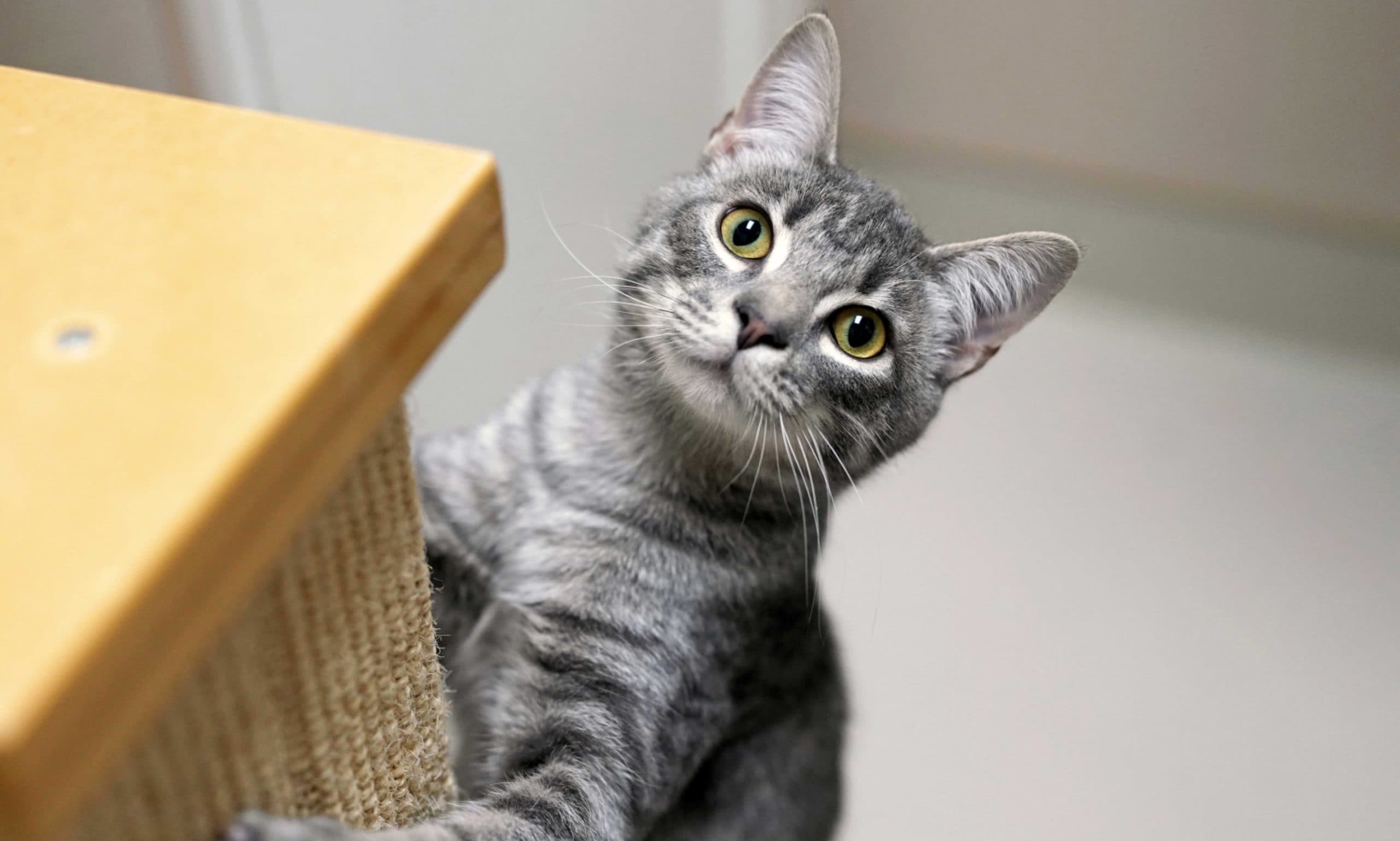
“I get a lot of clients that have a hyperactive kitten as part of their concern,” Lusvardi says. He notes that he especially sees a lot of “intercat conflict” that comes about when an older cat or even an adult cat just isn’t a fan of a new kitten’s antics.
Second, the possible causes of hyperactivity are many, including:
- Natural behavior: Developmentally, kittens have boundless energy. They require a lot of stimulation. They’re curious—“They’re learning about the world, so they’re likely to need to explore,” Lusvardi explains.
- Brain development: Lusvardi notes that there’s a biological component to hyperactivity. Kittens’ brains simply aren't fully developed.
- Genetics: “Some cats are genetically predisposed to be more wild,” he says. “This can vary by breed.” For example, cats such as Bengals and Savannahs are closer to “wild cats” and therefore may be more energetic. “Be prepared to play with them even more than other cats,” Lusvardi cautions.
- Lack of playtime and mental stimulation: These two factors are the most common reasons for kitten hyperactivity, according to Lusvardi. The good news is that you have some control over these by ensuring your cat has plenty of attention and interactive play.
- Inadvertent poor modeling: Sometimes cat parents will accidentally “train” their cats to display hyperactive behaviors. For example, if a cat is engaging in attention-seeking behaviors, yelling or using a squirt bottle can actually encourage the cat to be more hyperactive, Lusvardi explains. Because a hyper kitten that’s seeking stimulation may see a squirt bottle as a fun game, “you not only haven’t met their underlying need, but you just gave them what they want!”
By now, you’re probably wondering, “Do kittens calm down?!” The answer is yes, but you’ll need to be patient and put in the effort to help lower energy levels until your kitten becomes an adult cat. Lusvardi notes that the kitten stage ends at about 1 year of age.
However, “cats will have an adolescent phase that in some cases can be a bit more challenging,” he says. “They tend to still have a lot of energy.” Adolescence usually wraps up by around age 2, though, so there is a light at the end of the tunnel.
How To Prepare for a Hyperactive Kitten

1. Have the Right Mindset
“Mental preparation is the most important step as far as I’m concerned,” Lusvardi states. “Don’t go into getting a kitten thinking they’re an easier version of a puppy, as you will be very disappointed.”
Expect to give your kitten attention every single day through direct interaction. You’ll need to devote more time to your kitten for at least their first year of life than you would an adult cat.
2. Outfit Your House
Next, you should prepare your home to ensure you can meet your kitten’s needs, especially if they turn out to be hyperactive. This includes placing items such as cat trees, scratching posts, cat houses and cat beds in multiple locations—as well as having cat toys around the house.
“These give cats places to engage in natural cat behaviors like climbing and scratching,” Lusvardi says. “A cat house gives them a place to rest and hide, so it helps them feel secure in their environment.”
3. Place Items Strategically
Be mindful of where you place the new items for your kitten. A scratching post, for example, will probably be more useful in a prominent location. Lusvardi suggests an “intersection” so your kitten can use it to mark their territory. A scratching post placed in the space where the family room meets the kitchen, for example, will likely get more use than one put off in the corner of the family room.
Through mindful placement, these resources can help redirect unwanted behaviors and hyperactivity. For example, a tower placed near your counters may encourage a cat to climb on the tower rather than on the counters.
4. Kitten-Proof Your Home
Finally, kitten-proof your home. Hide valuables and breakables as well as electrical cords and other items that can cause injury to your kitten.
More on how to calm down cats:
Share:
